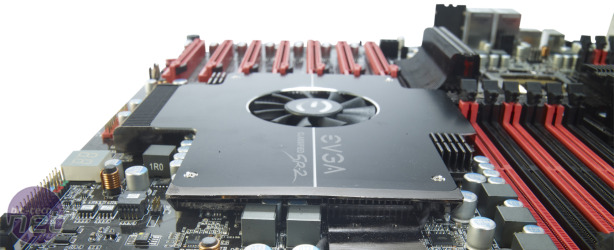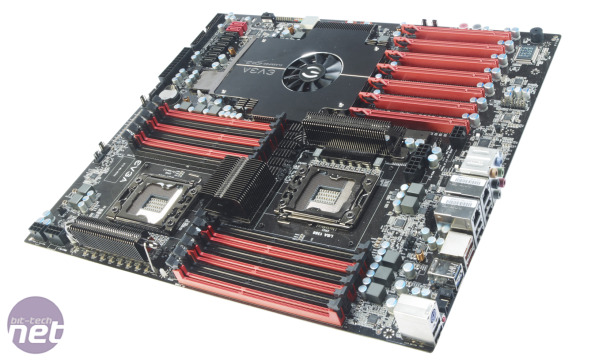Conclusion
The EVGA SR-2 is a unique product because it straddles both the enthusiast and professional markets equally. What’s more, unlike earlier attempts at overclockable dual-processor motherboards, such as the Intel D5400XS, the SR-2 isn’t restricted to using safe, but slow server memory, as it can use either registered ECC DDR3 or standard unbuffered DDR3. The former is what we’d recommend using if you’re only planning a mild overclock, say a few hundred megahertz, and want the best possible data integrity. However, for big overclocks, you’ll need to use unbuffered DDR3, as the memory industry has yet to manufacture any registered ECC DDR3 faster than 1,333MHz.The only thing we’d strongly warn against is running the SR-2 24/7 with lots of graphics cards without upgrading its cooling. This is because the stock heatsink and fan struggles to keep the chipset, Southbridge and two PCI-E controllers cool enough under heavy load, crashing after 15 to 20 minutes unless we positioned a screaming 2,000rpm fan blowing air over it. Fortunately, although we were unable to secure a sample in time for this review, EK has just launched a two-part waterblock for the SR-2, the EK-FB SR2, which is already on sale at Scan in the UK and Sidewinder Computer Systems in the US.
For professionals seeking a way to boost the performance of their workstations the SR-2 is capable of rendering/calculating at a rate previously only delivered by hideously expensive and noisy quad-processor servers. However, unless you absolutely must have the fastest system possible, we don’t recommended many readers going out and buying a pair of top-bin 3.33GHz Xeon X5680s for £2,517.
Instead, you should opt for a far cheaper pair of mid-range 2.66GHz Xeon X5650s for £1,510 and overclock them to the same or greater speed as the X5680s. Given that the SR-2 is very similarly priced to non-overclockable dual Xeon boards, going this route would save your business a healthy £1,007. Don’t forget either that the SR-2 has more 16x PCI-E 2.0 slots than any other dual-Xeon board, so if CUDA or CAL is your thing, you can install up to seven professional graphics/GPGPU cards in it.
For this combination of reasons we have no hesitation in recommending the EVGA SR-2 to IT professionals. If however as a business you’re worried about the warranty implications of overclocking, then we’d recommend checking out Scan’s various pre-overclocked warranty-backed bundles, reviewed after the SR-2 at the end of this article.
As Intel and AMD are so busy pushing up the core count of desktop CPUs, and so few consumer applications can take advantage of more than four cores the SR-2 isn’t a sensible alternative to a single-socket motherboard, especially when the former are more overclockable.
That said, if you’re not a fully paid up member of the sensible brigade then the SR-2 is an awful lot of fun to play with. For example, benchmarkers, those enthusiasts who simply buy hardware to compete in benchmark competitions will love the SR-2. Keen folders, or readers who work from home and want a combined workstation/gaming rig should also seriously consider the SR-2 as it’s capable of providing an unparalleled amount of computing power from a desktop-size PC.
In closing, the SR-2’s unrivalled ability to set new performance records via the ability to overclock a pair of Xeons plus a small army of graphics cards means it’s the ultimate motherboard and as such should be at the top of every enthusiast’s wishlist.
- Performance
- x
- x
- x
- x
- x
- x
- x
- x
- x
- x
- 10/10
- Features
- x
- x
- x
- x
- x
- x
- x
- x
- x
- -
- 9/10
- Value
- x
- x
- x
- x
- x
- x
- x
- x
- x
- -
- 9/10
- Overall
- x
- x
- x
- x
- x
- x
- x
- x
- x
- -
- 9/10

EVGA Classified SR-2 motherboard

MSI MPG Velox 100R Chassis Review
October 14 2021 | 15:04











Want to comment? Please log in.